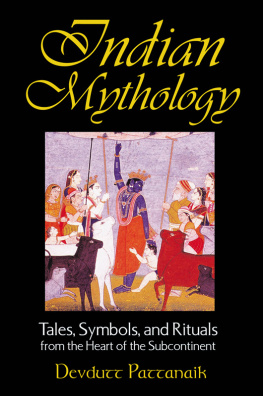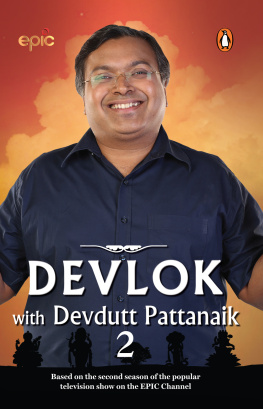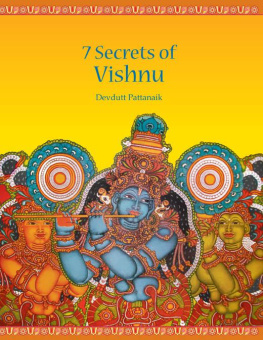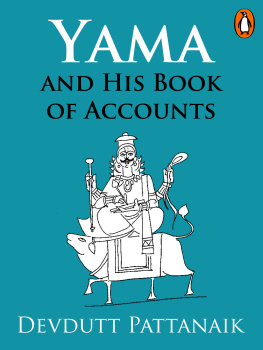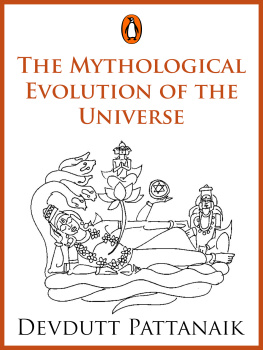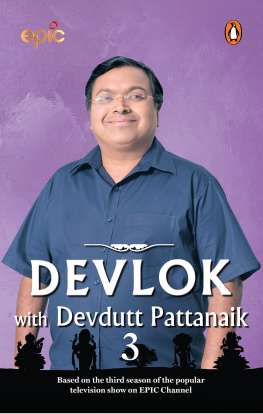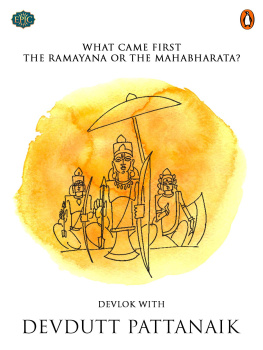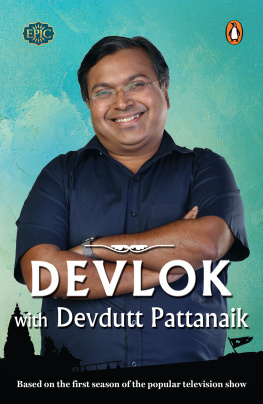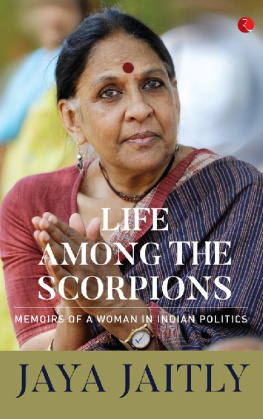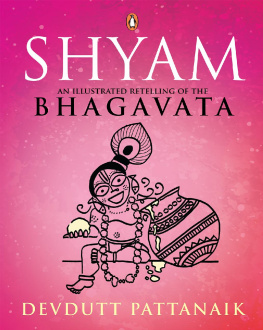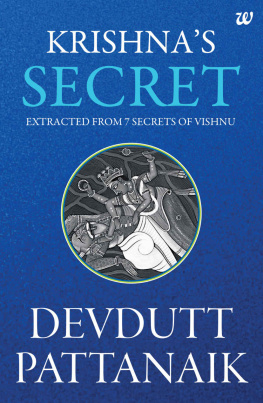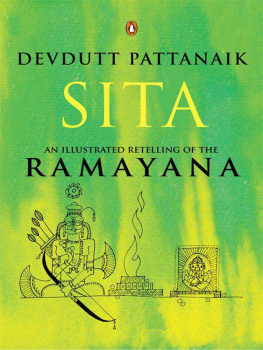DEVDUTT PATTANAIK
Jaya
An Illustrated Retelling of the
Mahabharata

PENGUIN BOOKS
PENGUIN BOOKS
Published by the Penguin Group
Penguin Books India Pvt. Ltd, 11 Community Centre, Panchsheel Park, New Delhi 110 017, India
Penguin Group (USA) Inc., 375 Hudson Street, New York, New York 10014, USA
Penguin Group (Canada), 90 Eglinton Avenue East, Suite 700, Toronto, Ontario, M4P 2Y3, Canada (a division of Pearson Penguin Canada Inc.)
Penguin Books Ltd, 80 Strand, London WC2R 0RL, England
Penguin Ireland, 25 St Stephens Green, Dublin 2, Ireland (a division of Penguin Books Ltd)
Penguin Group (Australia), 250 Camberwell Road, Camberwell, Victoria 3124, Australia (a division of Pearson Australia Group Pty Ltd)
Penguin Group (NZ), 67 Apollo Drive, Rosedale, North Shore 0632, New Zealand (a division of Pearson New Zealand Ltd)
Penguin Books (South Africa) (Pty) Ltd, Block D, Rosebank Office Park, 181 Jan Smuts Avenue, Parktown North, Gauteng 2193, South Africa
Penguin Books Ltd, Registered Offices: 80 Strand, London WC2R 0RL, England
First published by Penguin Books India 2010
Copyright Devdutt Pattanaik 2010
Cover illustrations by Devdutt Pattanaik
Cover design by Puja Ahuja
All rights reserved
This edition is for sale in the Indian Subcontinent and Singapore only
ISBN: 978-01-4310-425-4
This digital edition published in 2012.
e-ISBN: 978-81-8475-169-7
This book is sold subject to the condition that it shall not, by way of trade or otherwise, be lent, resold, hired out, or otherwise circulated without the publishers prior written consent in any form of binding or cover other than that in which it is published and without a similar condition including this condition being imposed on the subsequent purchaser and without limiting the rights under copyright reserved above, no part of this publication may be reproduced, stored in or introduced into a retrieval system, or transmitted in any form or by any means (electronic, mechanical, photocopying, recording or otherwise), without the prior written permission of both the copyright owner and the above-mentioned publisher of this book.
I dedicate this book to all the scholars, authors, archivists,
playwrights, film-makers and storytellers, both ancient and modern,
who have worked towards keeping this grand and ancient epic
alive through their songs, dances, stories, plays, novels,
performances, films and teleserials for over 3000 years
Authors Note
What Ganesha Wrote
They were perhaps whispers of God, or maybe insights of the wise. They gave the world meaning and life a purpose. These chants relieved vedana, the yearning of the restless human soul, hence became collectively known as the Veda. Those who heard them first came to be known as the Rishis.
Based on what the Veda revealed, the Rishis created a society where everything had a place and where everything changed with rhythmic regularity. The Brahmans were the teachers of this society, the Kshatriyas its guardians, the Vaishyas its providers and the Shudras its servants.
Thanks to the Veda, everyone in this society knew that the life they led was just one of many. In other lives, past or present, the Shudra of this life would be a Vaishya, and the Kshatriya would be a Brahman, or perhaps a rock or plant or beast, maybe even a god or a demon. Thus everything was interconnected and everything was cyclical. The point of existence in this dynamic, ever-changing world then was not to aspire or achieve, but to introspect.
Then there was a drought, a terrible fourteen-year drought, when the river Saraswati dried up, the society collapsed, and the Veda was all but forgotten. When the rains finally returned, a fisherwomans son, born out of wedlock, took it upon himself to compile the scattered hymns. His name was Krishna Dwaipayana which means the dark child who was born on a river island. His father was Parasara, grandson of the great Vasishtha, one of the seven Rishis who heard the Veda first. In time, Krishna Dwaipayana became known as Veda Vyasa, compiler of the books of wisdom.
Vyasa classified the hymns and created four collectionsRig, Yajur, Sama and Atharva. On completing this monumental task, Vyasa had this inexplicable urge to write a story, one that would convey the most abstract of Vedic truths to the simplest of men in the farthest corners of the world in the most concrete of forms. The gods liked the idea and sent the elephant-headed Ganesha to serve as his scribe.
Ganesha said, You must narrate without a pause. This would ensure that what Vyasa dictated was not adulterated by human prejudice.
I will, said Vyasa, provided you write nothing unless it makes sense to you. This ensured that all that was written appealed to the divine.
The characters of Vyasas tale were people he knew. The villains, the Kauravas, were in fact his own grandchildren.
Vyasa called his tale Jaya, meaning the tale of a victory. It had sixty portions. Of these, only one part reached humans through Vyasas student, Vaisampayana. Thus no one really knows everything that Vyasa narrated and Ganesha wrote down.
Vaisampayana narrated Vyasas tale at the yagna of Janamejaya, the great grandson of the Pandava Arjuna. This was overheard by a Sauti or bard called Romaharshana, who passed it on to his son Ugrashrava, who narrated it to Shonak and the other sages of the Naimisha forest.
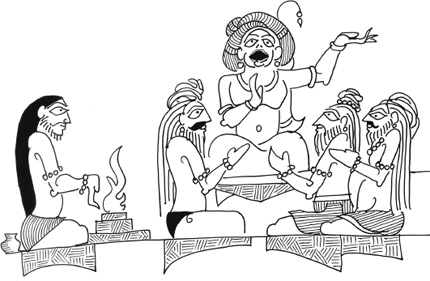
Vyasa also narrated the story to his son, the parrot-headed Suka, who narrated it to Parikshit, Janamejayas father, comforting him with its wisdom as he lay dying.
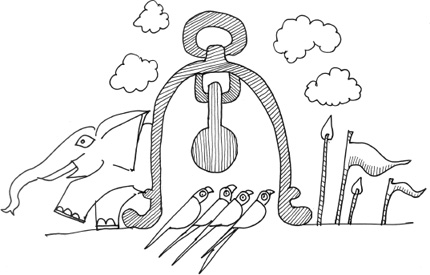
Jaimini, another of Vyasas students, also heard his teachers tale. But he was confused. Since Vyasa was not around to clarify his doubts, Jaimini decided to approach Markandeya, a Rishi blessed with long life, who had witnessed the events that had inspired Vyasas tale. Unfortunately, by the time Jaimini found Markandeya, the sage had renounced speech as part of his decision to renounce the world. Markandeyas pupils then directed Jaimini to four birds who had witnessed the war at Kuru-kshetra. The mother of these birds was flying over the battlefield when she was struck by an arrow that ripped open her womb. Four eggs fell out and fell to the ground. The ground was bloodsoaked, hence soft. The eggs did not break. The bell of a war-elephant fell on top of them and protected them through the battle. When they were discovered after the war, the Rishis realized the birds had heard much during the war and knew more than most humans. Their perspective and insights would be unique. So they were given the gift of human speech. Thus blessed, these birds were able to talk and clarify Jaiminis doubts. They also told Jaimini many stories that no one else knew.
As Vyasas tale moved from one storyteller to another, new tales were added, tales of ancestors and descendants, of teachers and students, of friends and foes. The story grew from a tiny sapling into a vast tree with many branches. At first it was about an idea. Then the idea changed and it came to be known as Vijaya. Before long it became not about any idea but about people. It was retitled Bharata, the story of the Bharata clan and the land they ruled.


